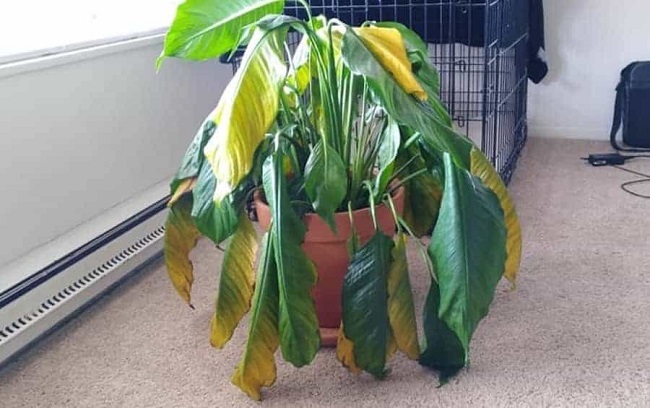
What happens when your plants are getting too much? There are four main areas where your plants might be getting more than they need or want. Because the factors of plant growth are so interdependent, if any one of these areas is out of balance, it will affect the way your plants are able to use the other factors in an environment to their full potential. Water, nutrients, light, and heat are prime categories of excess, and in an LED garden the probability that you are getting too much is even greater.
Consider that over watering is the number one cause of death in indoor plants; now consider that under LED lighting you eliminate the radiant heat that is responsible for much of the evaporation. While most plants can easily bounce back from a lack of water, over watering is not easy to recover from. When you over water your plants you shut off the root’s oxygen supply and create a breeding ground for fungus that will turn healthy, creamy white colored roots into brown, mushy, slimy, or smelly roots. Other symptoms of over watering include:
- Standing pools of water
- Leaves turning yellow or developing soft, rotten, brown patches that fail to grow
- Young and old leaves falling off at the same time or flowers that are rotting.
Aeroponic and hydroponic systems generally reduce the risks of over watering. If you prefer to use a grow medium, choose something with the ability to hold oxygen in your root zone. Expanded clay pellets, perlite, freshwater Diatomaceous earth, or even adding gravel to your soil will help drainage and hold oxygen. Water plants once, and then let them run low on water. This will establish the water usage rate for your plants and allow you to set a schedule for when to water.
If your leaves appear to be burning at the tips with brown, black, or dark spots, or they are wilting even when they are well watered, they may be receiving too much fertilizer. The amount of fertilizer your plant can use, is dependent on the light, water, CO2, and heat in the room so if any of these variables change, your fertilizer regiment should change as well
Replacing an HID lamp with an LED lamp reduces your water requirement by eliminating heat and by also giving the plant more quality light. Regardless of the light source you should always start out using ½ of the nutrients recommended by the manufacturer and only increase the dosage if your plants show signs of malnutrition.
If you are certain that your plants have been overfed- remove the plant from the medium, rinse the roots, and then transplant it into fresh medium immediately.
When outdoor plants receive a high level of light, this is usually accompanied by an increase in temperature which helps the plants to make use of the light. Increased HID lighting also equates to adding radiant heat. LEDs allow the grower to add light without adding heat, and because 100% of the light emitted is being absorbed by your plants (as opposed to 10% of the light from traditional lighting) there is a danger of giving your plants too much light.
It is important to transition plants into any new light source and starting with less is always better than starting with more. Plants will normally survive a period of low light, but a prolonged exposure to excess light can cause permanent damage. If you add LED lighting it is wise to start the light at the maximum distance from the plant canopy. Only if plants show signs of needing more light should you slowly lower lights an inch or two at a time. Always give plants a chance to adjust and watch for improvements before lowering the lights further or adding additional lighting.
The problem of too much heat can first appear in many different parts of the plant:
- Flower buds may wither
- Leaves may droop or become more attractive to insects
- Chlorophyll may disappear so that leaves appear white or brown, or roots may cease growing.
The plant may survive in a stunted or chlorotic state for years but once the damage is done it is difficult for the plant to recover. The best weapon against heat damage in an outdoor garden is choosing plants that are appropriate to your climate and area you are planting. For the indoor gardener, over heating is generally associated with HID light sources. A simple solution is that instead of running 1,000 watts of HPS for the entire photoperiod, run the HPS for one hour in the morning, one hour in the afternoon, and one hour before the lights go off (or 30 minutes every 3 hours). Then, run the LEDs for the entire photoperiod. The radiant heat from the HPS will keep growth rates on par with what the indoor gardener has come to expect and the LEDs will provide quality light, prevent overheating, and reduce your electrical use by over 70%.
Angela Lundmark is a freelance writer that enjoys outdoor and indoor gardening.
Related Articles & Free Email Newsletter Sign Up
Micro Greens Taste Great and Can Be a Small Greenhouse Growers Profit Center
Plant Tissue Culture Creates a Lot of Plants at Little Expense


Comment here